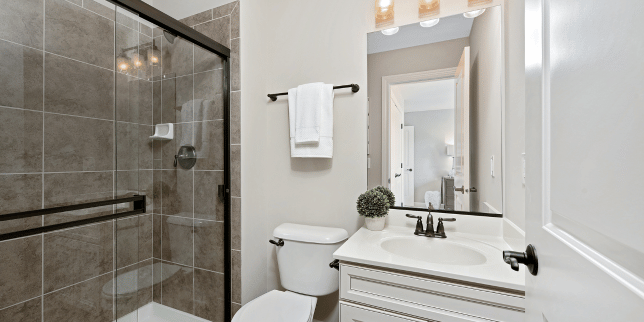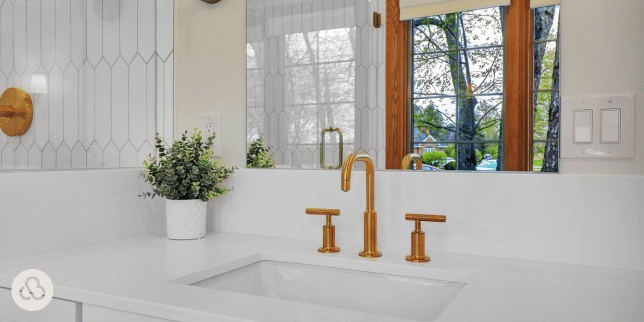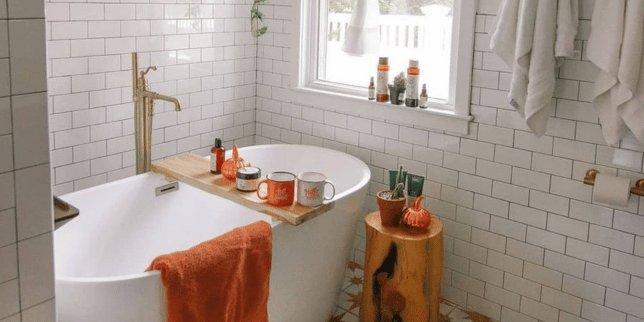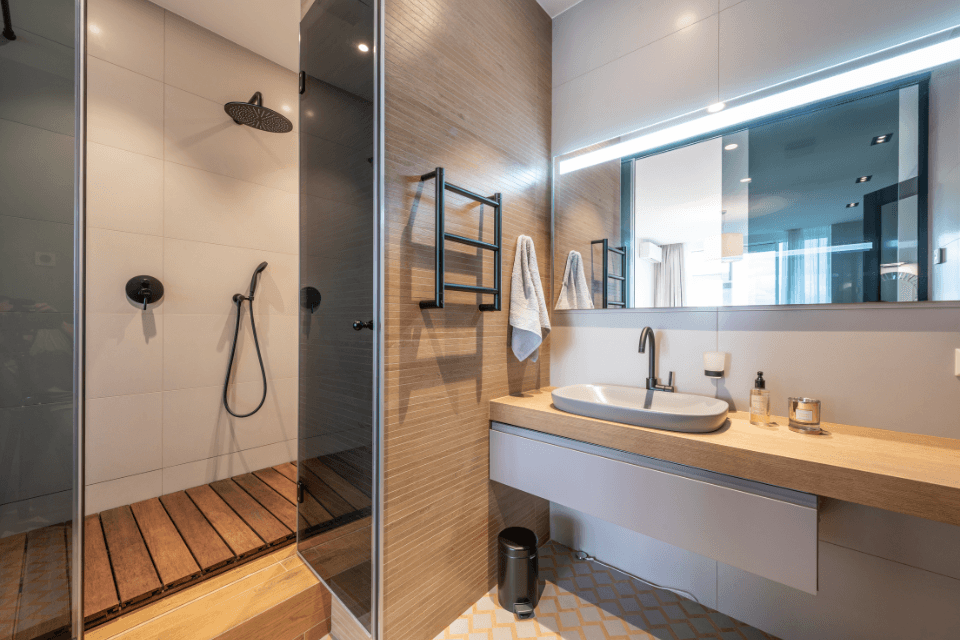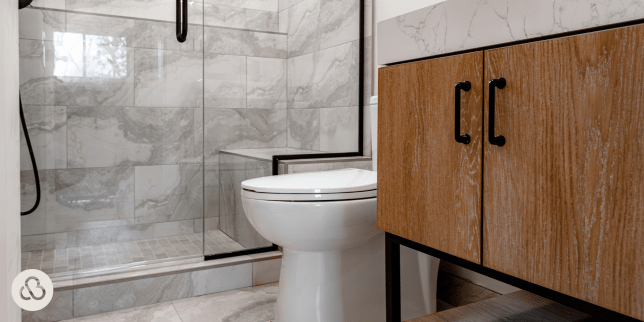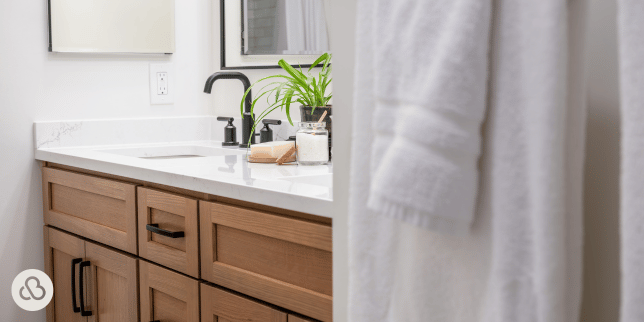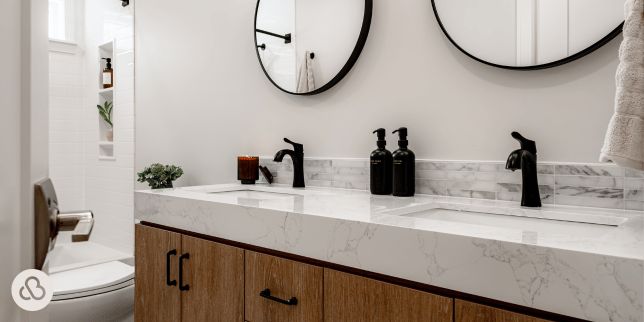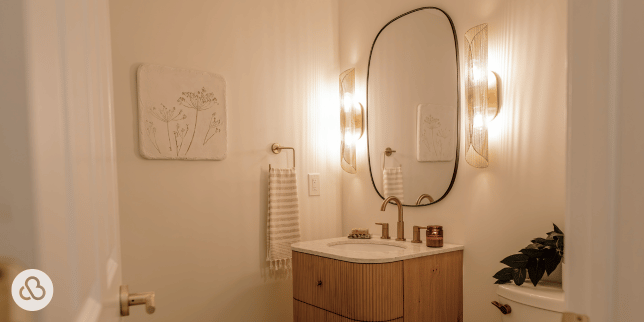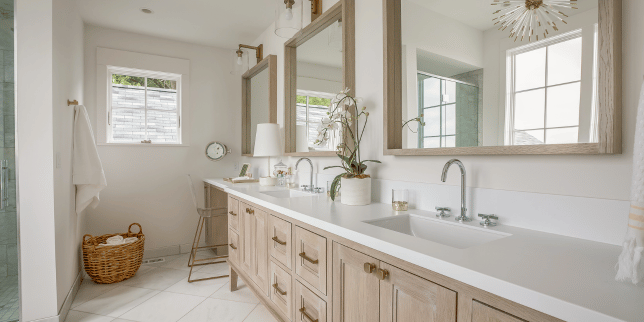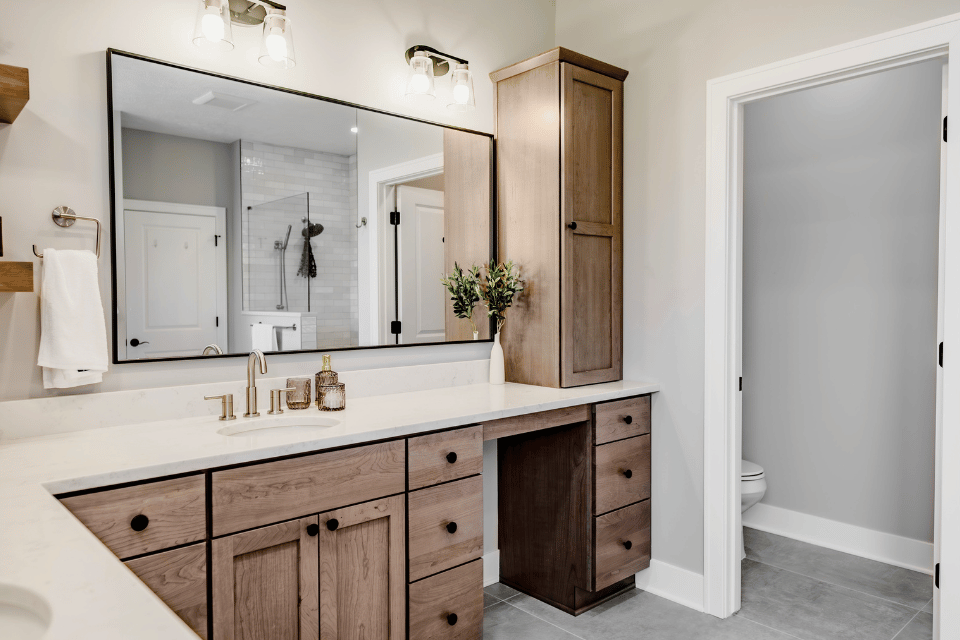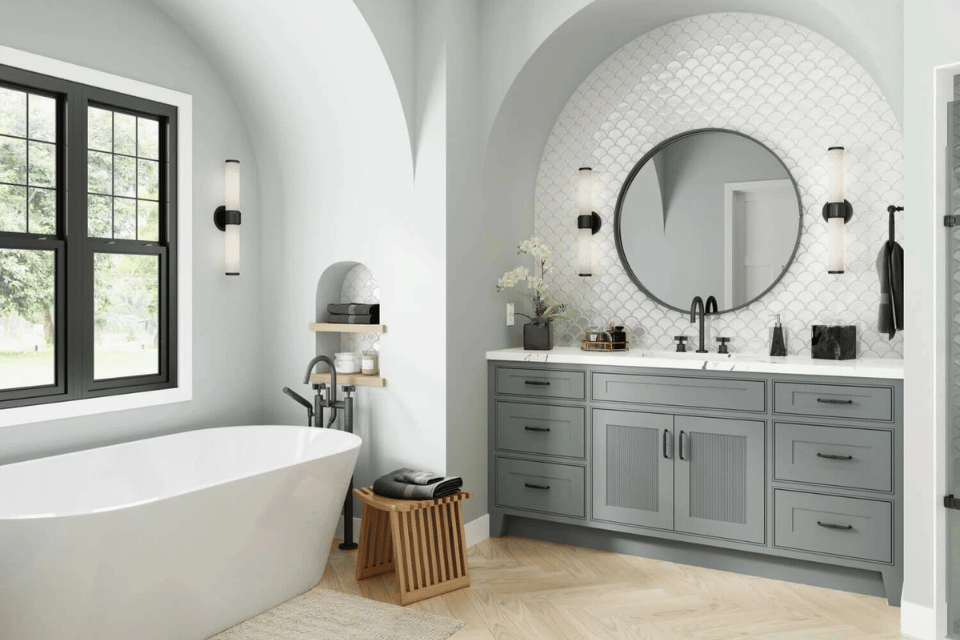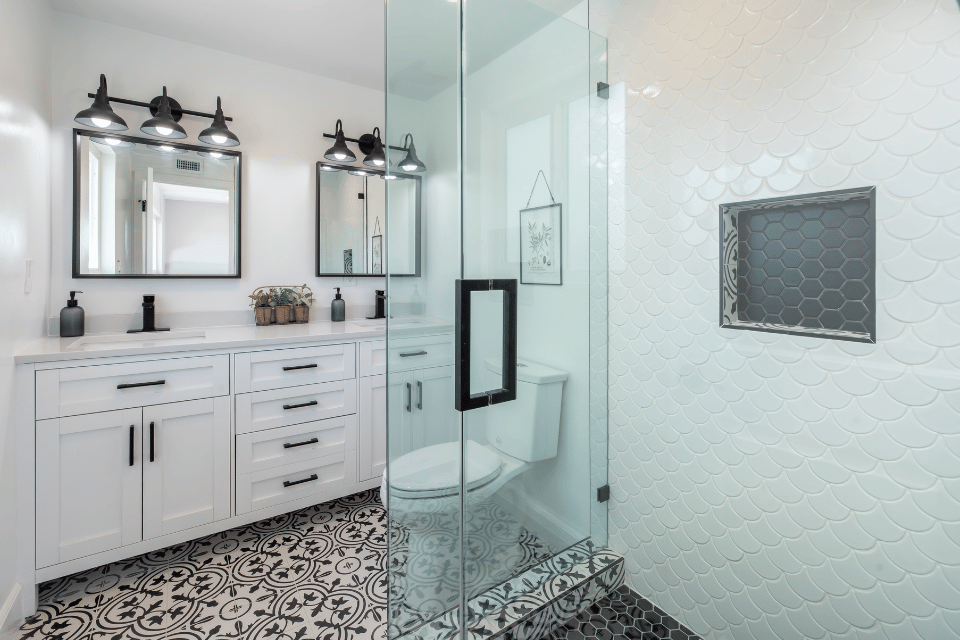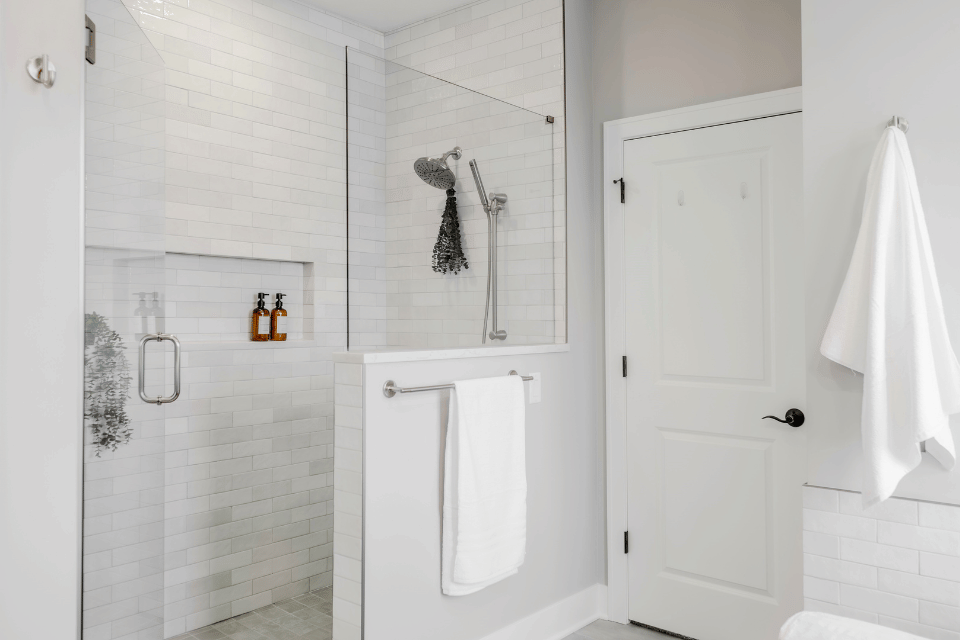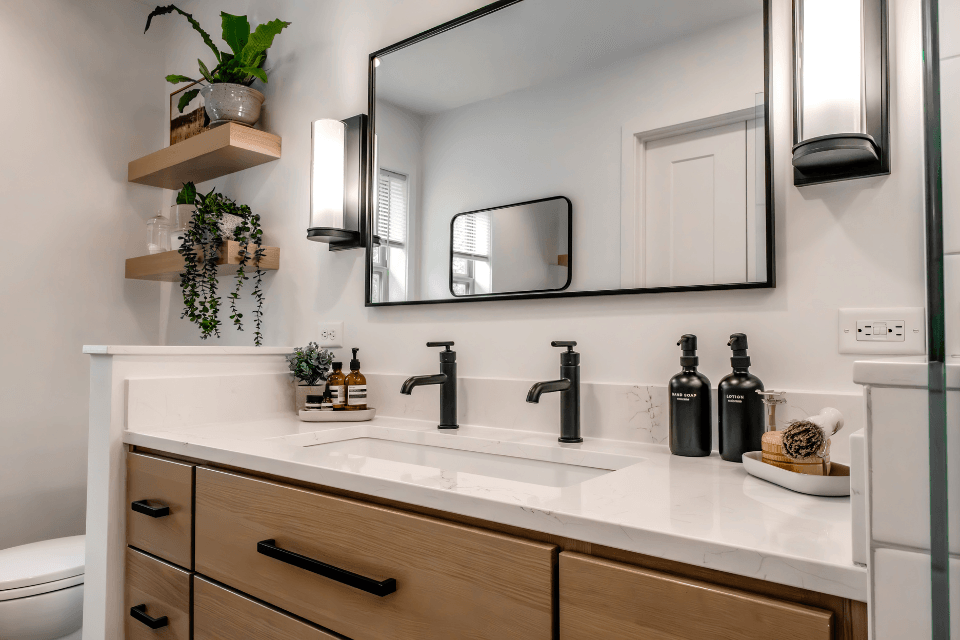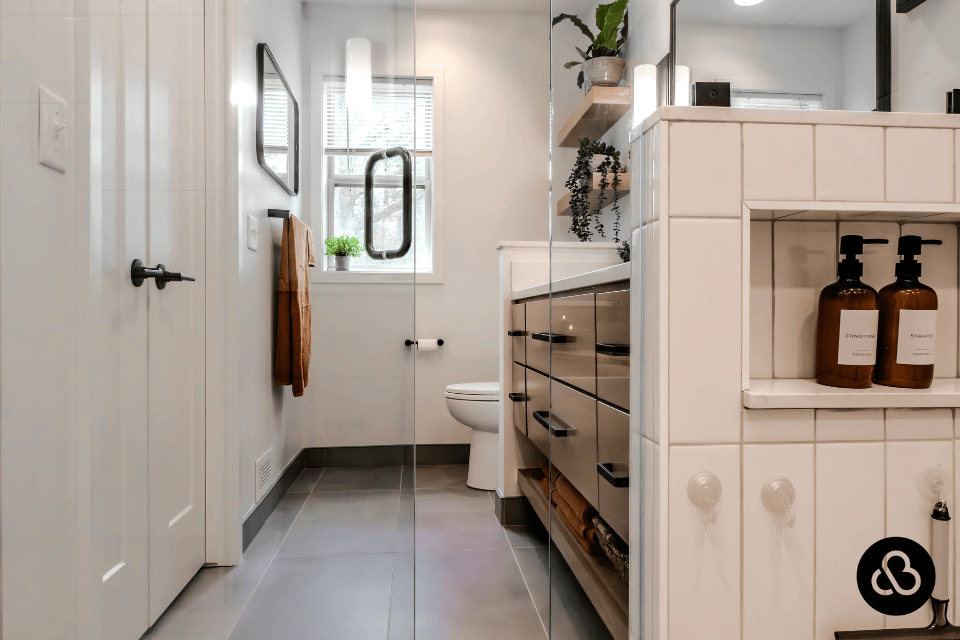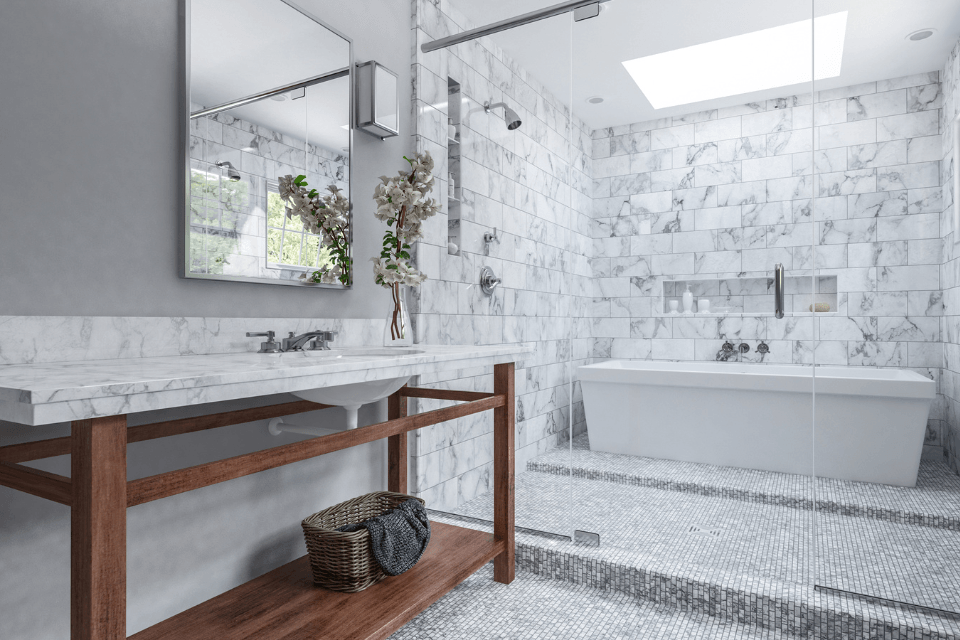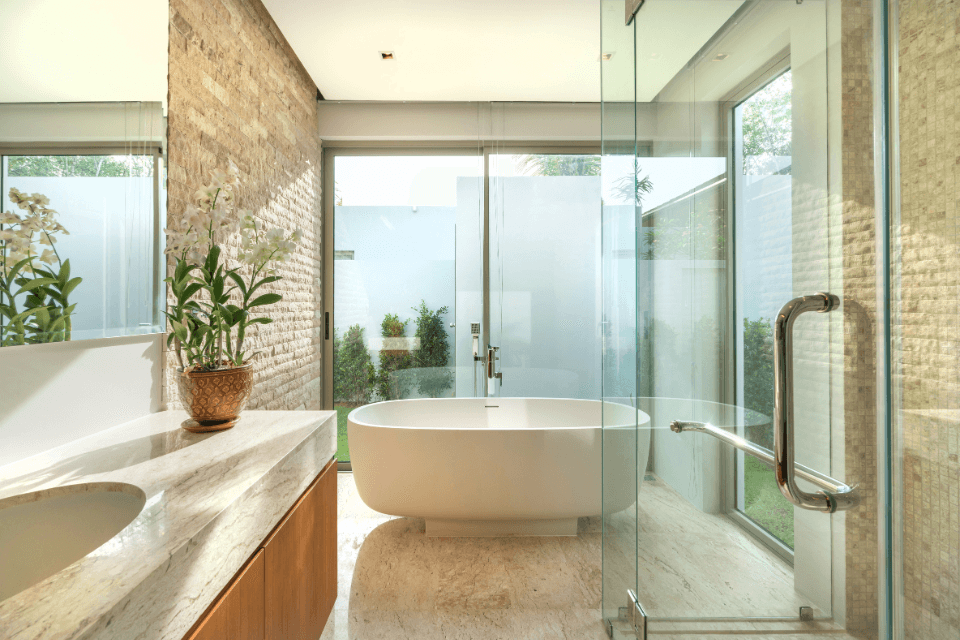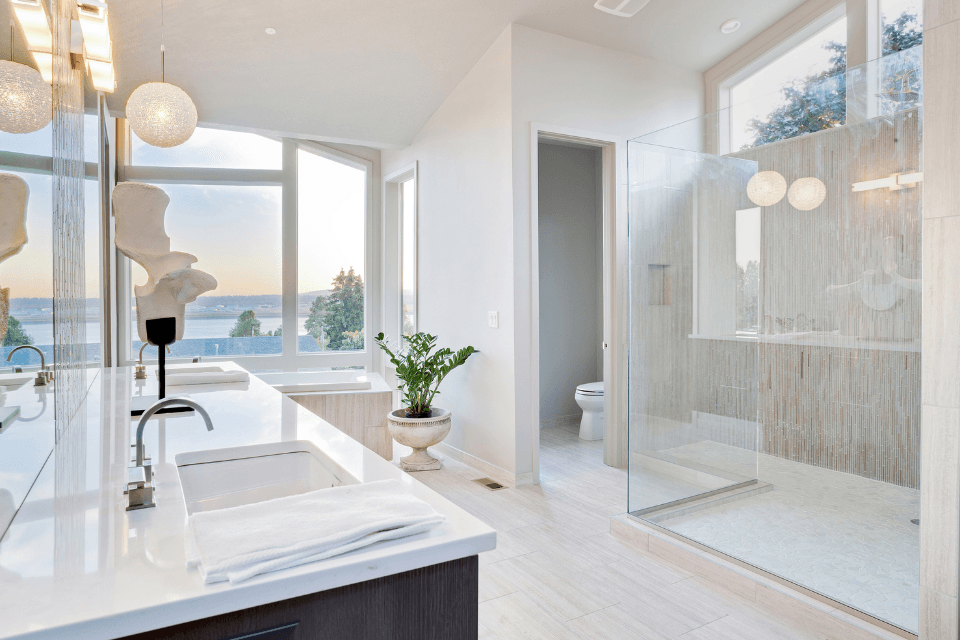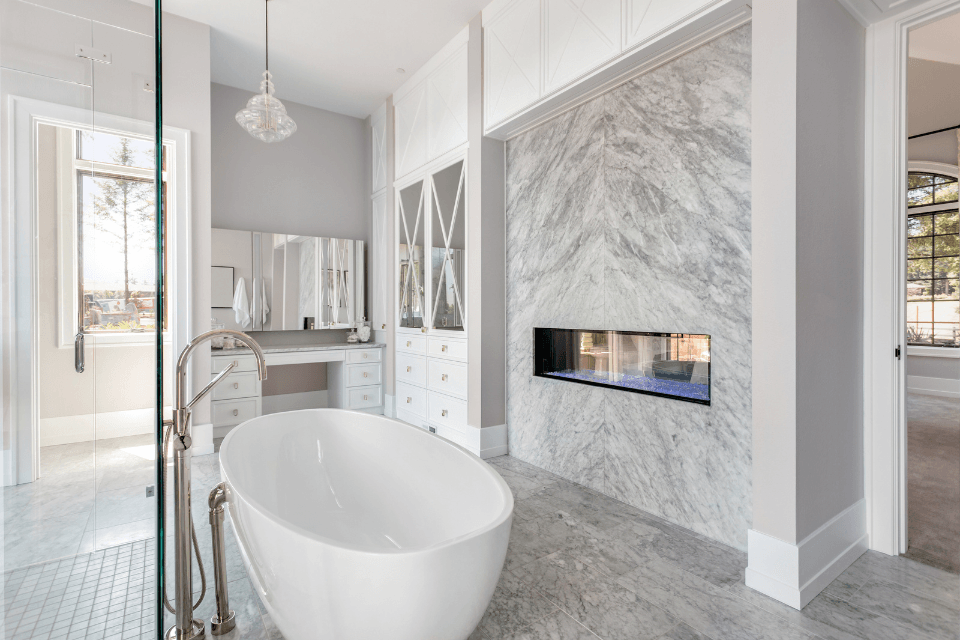
Are you planning a bathroom remodel but worried about unexpected costs derailing your budget? Many homeowners dive into remodeling projects with a clear vision of their dream bathroom, only to be blindsided by hidden expenses that can add up quickly. Ignoring these potential costs can lead to financial stress, delays, and even compromised quality in your renovation.
We’ve helped many homeowners navigate these challenges, ensuring their remodels stay on track and within budget. At Custom Built Design & Remodeling, we understand how overwhelming it can be to manage the details of a bathroom remodel. With over 15 years of experience in the industry, we've seen firsthand how unplanned costs can impact a project.
In this article, you’ll learn about the most common hidden bathroom remodel costs and how to prepare for them:
- Plumbing Updates
- Electrical Work
- Structural Changes
- Permits and Inspections
- Material Costs
- Labor Costs
- Unexpected Repairs
- Temporary Living Arrangements
- Design Changes
- Final Touches and Decorations
1. Plumbing Upgrades
When remodeling an older bathroom, it’s common to discover that the existing plumbing doesn’t meet current standards. Upgrading old pipes or rerouting plumbing can add a significant cost to your project. Budgeting for these potential updates is important, especially if you’re moving fixtures like toilets or sinks.
Common Plumbing Updates:
- Installing New Fixtures: New sinks, toilets, showers, and bathtubs typically require updated plumbing connections to ensure proper water flow and drainage. This also helps improve water efficiency with modern, low-flow fixtures.
- Relocating Plumbing Lines: If the remodel involves moving major fixtures, like the toilet or shower, plumbing lines will need to be rerouted to accommodate the new layout, which can require significant updates to the existing system.
- Upgrading or Replacing Pipes: Older homes often have outdated plumbing systems, such as galvanized steel or cast iron pipes. During a remodel, these are frequently replaced with modern materials like PEX or copper to improve water flow and reduce the risk of leaks.
2. Electrical Work
Like plumbing, electrical systems in older homes may need to be updated to support new lighting, outlets, and other features. Adding GFCI outlets, upgrading your circuit breaker, or installing new lighting can quickly increase your overall budget.
Let’s explore this electrical work in further detail:
Electrical Work to Consider:
- Dedicated Circuits: Adding or upgrading dedicated circuits for high-power devices like heated floors, towel warmers, or jet tubs can prevent circuit overload and ensure safe operation.
- GFCI Outlet Installation: Bathrooms require ground-fault circuit interrupter (GFCI) outlets to protect against electrical shocks, especially near water sources like sinks and showers. Ensuring all outlets are GFCI-compliant is a crucial safety measure.
- Upgraded Lighting: Adding task lighting around mirrors, ambient lighting for overall illumination, or accent lighting for design features can enhance functionality and aesthetics. Consider energy-efficient LED options and dimmer switches for adjustable brightness.
3. Structural Changes
If your remodel involves knocking down walls or expanding the bathroom, you may encounter structural issues that must be addressed. Reinforcing walls, updating support beams, or even dealing with hidden mold or water damage can lead to additional costs you didn’t initially plan for.
Common Structural Changes:
- Expanding or Adjusting Doorways: Widening or relocating doorways is a frequent change, especially for accessibility improvements, allowing easier entry or exit and creating a more functional flow.
- Floor Reinforcement: When adding heavy features like a large bathtub or tile flooring, reinforcing the bathroom floor may be necessary to support the added weight and ensure structural integrity.
- Wall Removal or Reconfiguration: To create more space or improve layout, homeowners often remove or reconfigure walls. This can open the bathroom or accommodate larger features like a walk-in shower or double vanity.
4. Permits and Inspections
Depending on the scope of your remodel, you may need to obtain permits and undergo inspections to ensure everything is up to code. Permit costs vary by location; failing to account for these can lead to delays and added expenses.
Disclaimer: Your design-build firm or general contractor should obtain all necessary permits and schedule inspections for you throughout the project. We always recommend asking your remodeling partner about their permit and inspection process before signing the dotted line.
Permit Considerations Your Design-Build Firm Should Take Care Of:
- Structural Changes Permit: Any modifications to load-bearing walls, expansions, or major structural adjustments require a permit to ensure the changes meet local building codes and safety standards.
- HVAC or Ventilation Permits: Installing or altering ventilation systems, such as bathroom exhaust fans or ductwork, may require a permit to ensure proper air circulation and adherence to energy efficiency standards.
- Plumbing and Electrical Permits: Upgrading or relocating plumbing and electrical systems, such as moving fixtures or adding new outlets, typically requires permits to ensure compliance with local safety and building regulations.
5. Material Costs
While you might have a specific budget for tiles, fixtures, and cabinetry, it’s important to consider that prices can fluctuate. Specialty materials, custom orders, or last-minute changes to your design can drive up costs unexpectedly. Always budget a little extra for materials to cover these changes.
Let’s explore these costs in more detail:
Common Material Costs:
- Tile and Flooring: Materials for bathroom flooring, such as ceramic, porcelain, or luxury vinyl tile, can vary in cost depending on the quality and design. Wall tiles for showers or backsplashes also contribute to this expense.
- Plumbing Fixtures: Costs for new sinks, faucets, toilets, and showerheads can range widely based on the material, brand, and style. High-end fixtures, like rain shower systems or designer faucets, add to the overall budget.
- Cabinetry and Vanities: Custom or semi-custom vanities and cabinetry often represent a significant portion of the material costs. This includes not only the cabinets themselves but also countertops, which might be made from materials like quartz, marble, or granite.
6. Labor Costs
The labor involved in a bathroom remodel is often underestimated. Specialty trades like plumbers, electricians, and tile installers can be expensive, especially if complications arise. It’s wise to get detailed quotes from your contractors and factor in potential overtime or additional labor costs.
Here are three common labor costs associated with bathroom remodels:
Common Labor Costs:
- Tile Installation: Installing tiles for floors, walls, or shower areas requires skilled labor. The complexity of the design, the type of tile, and the size of the area being tiled can all influence labor costs.
- Plumbing Work: Labor costs for moving or installing new plumbing fixtures, such as sinks, toilets, and showers, are significant. Complex changes like rerouting pipes or adding new water lines can increase this expense.
- Electrical Work: Updating or adding new electrical components, such as lighting, outlets, or exhaust fans, involves labor costs for a licensed electrician. This includes ensuring the bathroom meets code requirements and safely handling any rewiring needed.
7. Unexpected Repairs
During a remodel, you may uncover issues like water damage, mold, or structural problems that weren’t visible before. Addressing these issues is crucial for the safety and longevity of your bathroom but can add to your overall costs.
Let’s dive into these repairs further:
Common Unexpected Repairs:
- Water Damage Repairs: Hidden water damage behind walls or under floors is often discovered during a remodel. Leaking pipes, poorly sealed fixtures, or water intrusion can lead to rotting wood, mold, and structural issues that require immediate attention.
- Mold Remediation: Bathrooms are prone to moisture buildup, and mold is a common problem, especially in older homes or poorly ventilated spaces. Addressing mold growth may involve removing drywall, treating affected areas, and improving ventilation.
- Outdated Plumbing or Electrical Systems: During a remodel, it’s common to find outdated or unsafe plumbing and electrical systems that need to be replaced. Old galvanized pipes, faulty wiring, or systems not up to code can lead to unexpected repairs to ensure safety and compliance.
8. Temporary Living Arrangements
If your bathroom remodel is extensive, you might need to make arrangements to use another bathroom or stay elsewhere temporarily. The cost of a hotel stay or setting up a temporary bathroom can be an additional hidden expense.
Here are three temporary living arrangements you can make during a bathroom remodel:
Common Temporary Living Arrangements:
- Stay with Friends or Family: If the remodel will be disruptive or lengthy, staying with friends or family can provide comfort and convenience while your bathroom is out of service.
- Use a Guest Bathroom: This is often the most convenient solution if your home has an additional bathroom. While the primary bathroom is being remodeled, you can use a guest or secondary bathroom for daily needs.
- Rent a Portable Bathroom: For homeowners without an extra bathroom, renting a portable restroom, such as a high-end porta-potty with shower options, can be a practical short-term solution, especially for larger or more complex remodels.
9. Design Changes
Changing your mind midway through a project is common, but it can be costly. Adjusting the layout, opting for different materials, or adding extra features can increase labor and material costs. Finalizing your design before work begins is important to avoid these last-minute expenses.
Here are three common design changes that can occur during your bathroom remodel:
Common Design Changes:
- Material Upgrades: During the remodel, you might upgrade materials for a more luxurious finish, such as swapping out standard tiles for high-end options, choosing a more durable countertop material, or upgrading to custom cabinetry.
- Layout Adjustments: You may change the bathroom layout to improve flow, increase storage, or make space for new fixtures like a double vanity or larger shower. This could involve moving plumbing or adjusting the placement of the toilet, sink, or bathtub.
- Lighting Enhancements: Lighting often becomes a key focus as the design evolves. Adding more natural light through windows or skylights, incorporating task lighting around mirrors, or installing ambient lighting can be common changes made to enhance the overall look and functionality of the space.
10. Final Touches and Decorations
Finally, don’t forget to budget for the finishing touches. New towels, bath mats, accessories, and decorations might seem minor, but they can add up quickly. These items are essential to complete the look of your new bathroom and should be factored into your overall budget.
Here are three common final touches and decorations for your bathroom remodel:
Common Final Touches and Decorations:
- Plants and Artwork: Incorporating greenery or artwork can bring life and personality to the space. Small potted plants, wall art, or a decorative vase can make the bathroom more inviting and complete.
- Mirrors and Vanity Accents: Adding a stylish mirror, whether framed or frameless, is a key final touch. Decorative vanity hardware, like polished handles or custom faucets, can further elevate the look and feel of the bathroom.
- Towel Bars and Hooks: Installing modern towel bars, hooks, or racks enhances functionality and contributes to the bathroom's overall design aesthetic. These can be matched to other fixtures like faucets, and drawer pulls for a cohesive look.
Next Steps to Remodeling Your Bathroom
When planning your bathroom remodel, you must know hidden costs that could unexpectedly stretch your budget. Without considering these factors, you may face unexpected expenses that can derail your project and add stress to your remodeling journey.
By identifying and planning for these common hidden costs, you’ll be better equipped to manage your budget and keep your bathroom remodel on track. From addressing outdated plumbing to accounting for design changes, understanding these potential expenses will help ensure a smooth and successful renovation.
At Custom Built Design & Remodeling, we know how important it is to anticipate and prepare for every aspect of your remodel. With our 15+ years of experience, we’ve guided many homeowners through the complexities of remodeling, helping them avoid costly surprises and achieve their dream spaces.
Planning a bathroom remodel? Contact our team of design-build professionals to ensure your project is completed on time, within budget, and to the highest standards. Explore our recent projects or download our free Bathroom Remodel Planning Guide to get started.
Now that you know more about hidden bathroom remodeling costs, let’s explore your first potential steps with Custom Built’s Proven Process, the best designs to consider for the upcoming year, and how much your project will cost.
- What is a Discovery Call with Custom Built? - This article details what your first call with Custom Built looks like as you start planning your remodel.
- The Best Bathroom Remodeling Designs for 2024 - From minimalist styles to spa-like color schemes, this blog explores trending bathroom remodeling designs for the upcoming year.
- How Much Does a Bathroom Remodel Cost in Lansing, Michigan? - Coupled with an informative video from our CEO, Michael Flory, this article dives into the costs associated with a bathroom remodel in Lansing.
Aaron has been in the building industry his entire life. He worked in his family’s housing business growing up in Dewitt, MI, and for nearly 40 years, built homes in the Mid-Michigan area. He has also worked with the Greater Lansing Home Builder’s Association since he was 18 years old.
Topics:




